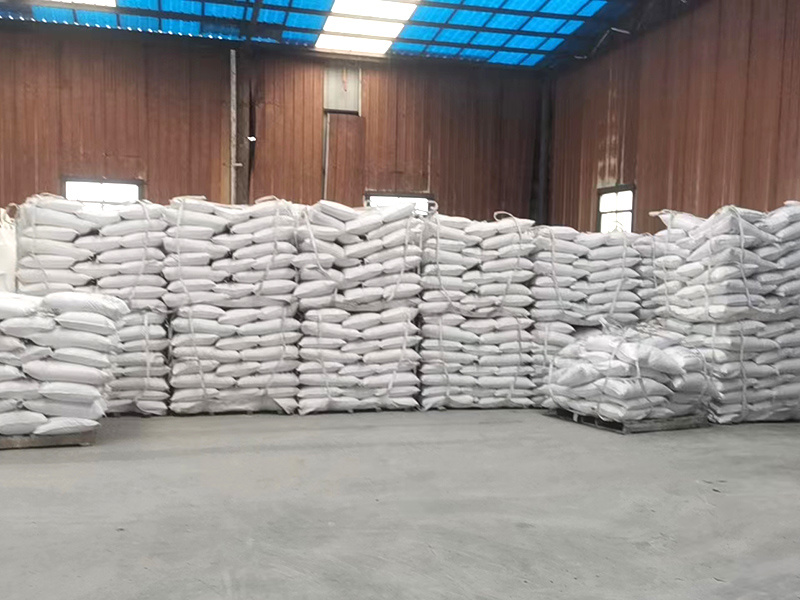Exploring the Role of Tripolyphosphate in Modern Chemical Industries
2025-08-12
Exploring the Role of Tripolyphosphate in Modern Chemical Industries
Table of Contents
1. Introduction to Tripolyphosphate
2. Chemical Properties of Tripolyphosphate
3. Manufacturing Process of Tripolyphosphate
4. Applications of Tripolyphosphate in Various Industries
4.1 Applications in the Food Industry
4.2 Usage in the Detergent Industry

Exploring the Role of Tripolyphosphate in Modern Chemical Industries
Table of Contents
- 1. Introduction to Tripolyphosphate
- 2. Chemical Properties of Tripolyphosphate
- 3. Manufacturing Process of Tripolyphosphate
- 4. Applications of Tripolyphosphate in Various Industries
- 4.1 Applications in the Food Industry
- 4.2 Usage in the Detergent Industry
- 4.3 Agricultural Applications
- 5. Benefits of Using Tripolyphosphate
- 6. Environmental Considerations
- 7. Future Trends and Innovations in Tripolyphosphate Use
- 8. FAQs About Tripolyphosphate
- 9. Conclusion
1. Introduction to Tripolyphosphate
Tripolyphosphate, a salt of triphosphoric acid, plays a crucial role in various chemical processes across multiple industries. Its chemical composition, represented as Na5P3O10, indicates a complex structure that allows for a multitude of applications. As industries evolve, understanding the versatility and significance of tripolyphosphate becomes increasingly important.
2. Chemical Properties of Tripolyphosphate
The unique features of tripolyphosphate stem from its chemical properties. This compound is known for its solubility in water, making it an excellent candidate for various applications.
2.1 Molecular Structure
The molecular structure of tripolyphosphate consists of three phosphate units linked by central oxygen atoms, creating a stable form. This structure allows tripolyphosphate to act as a chelating agent, binding with metal ions and enhancing its efficacy across applications.
2.2 Stability and Reactivity
Tripolyphosphate demonstrates stability under a range of pH levels, which amplifies its applicability. Its reactivity towards certain metals makes it pivotal in preventing undesirable reactions in industrial processes.
3. Manufacturing Process of Tripolyphosphate
The production of tripolyphosphate involves several steps, ensuring purity and optimal properties. Typically, the manufacturing process starts with the reaction of sodium phosphate with phosphoric acid.
3.1 Raw Materials
The primary raw materials include phosphoric acid and sodium carbonate. The quality of these materials directly impacts the final product's effectiveness.
3.2 Synthesis Method
The synthesis of tripolyphosphate can be achieved through thermal or wet processes. The thermal method involves heating the ingredients, while the wet process utilizes aqueous environments. Each method has its advantages, affecting the yield and purity of the tripolyphosphate produced.
4. Applications of Tripolyphosphate in Various Industries
Tripolyphosphate finds applications across several sectors, showcasing its versatility.
4.1 Applications in the Food Industry
In the food sector, tripolyphosphate acts as a food additive, enhancing texture and moisture retention in processed foods. It is commonly used in seafood processing, meat products, and dairy items, where it helps to maintain quality and freshness.
4.2 Usage in the Detergent Industry
In detergents, tripolyphosphate serves as a builder, improving the cleaning efficiency of surfactants. By softening water, it enhances the effectiveness of detergents in removing stains and dirt, making it an essential ingredient in household and industrial cleaning products.
4.3 Agricultural Applications
Tripolyphosphate is also vital in agriculture, particularly in fertilizers. It acts as a phosphorus source, promoting plant growth and yield. The compound is used in various formulations to ensure nutrient availability for crops.
5. Benefits of Using Tripolyphosphate
The advantages of tripolyphosphate extend beyond its chemical properties.
5.1 Enhanced Performance
Its ability to chelate metal ions significantly enhances performance in various industrial applications, including food processing and cleaning products.
5.2 Cost-Effectiveness
Using tripolyphosphate in manufacturing processes can lead to cost savings. Its effectiveness allows for lower quantities to be used, reducing overall material costs.
6. Environmental Considerations
While tripolyphosphate has beneficial applications, environmental concerns have arisen regarding its use, particularly in agricultural practices.
6.1 Eutrophication Issues
Excessive use of phosphorus compounds, including tripolyphosphate, can lead to eutrophication in water bodies. This process causes algal blooms, depleting oxygen levels and harming aquatic ecosystems.
6.2 Regulatory Measures
To mitigate these impacts, regulatory measures are being implemented. Industries are encouraged to adopt best practices to minimize the environmental footprint of tripolyphosphate use.
7. Future Trends and Innovations in Tripolyphosphate Use
As industries discover new applications for tripolyphosphate, ongoing research is crucial.
7.1 Development of Eco-Friendly Alternatives
Innovation in biochemistry is leading to the exploration of eco-friendly alternatives to traditional tripolyphosphate. Biodegradable options are being investigated to lessen environmental impacts while maintaining efficacy.
7.2 Enhanced Formulations
Future formulations may focus on combining tripolyphosphate with other compounds to enhance its properties and broaden its applications across industries.
8. FAQs About Tripolyphosphate
Q1: What is tripolyphosphate used for?
A1: Tripolyphosphate is used in various industries, including food processing, detergents, and agriculture, mainly for its chelating properties and as a phosphorus source.
Q2: Is tripolyphosphate safe for consumption?
A2: Yes, tripolyphosphate is generally recognized as safe when used in food applications, adhering to regulatory guidelines.
Q3: Can tripolyphosphate cause environmental damage?
A3: Excessive use can lead to eutrophication, but regulatory measures aim to mitigate environmental impacts.
Q4: How is tripolyphosphate manufactured?
A4: It is produced by reacting sodium phosphate with phosphoric acid through various synthesis methods, including thermal and wet processes.
Q5: What are the benefits of using tripolyphosphate in detergents?
A5: Tripolyphosphate enhances the cleaning efficiency of detergents, softens water, and reduces the amount of surfactants needed, making it cost-effective.
9. Conclusion
Tripolyphosphate holds a vital position in modern chemical industries, showcasing remarkable versatility across multiple sectors. Its unique chemical properties allow it to serve critical roles in food processing, detergents, and agriculture. However, as we embrace its advantages, it is essential to consider and address the associated environmental challenges. By focusing on sustainable practices and innovative alternatives, the industry can continue to harness the benefits of tripolyphosphate while safeguarding our ecosystems for future generations.
PREVIOUS:


 TESFA STPP
TESFA STPP